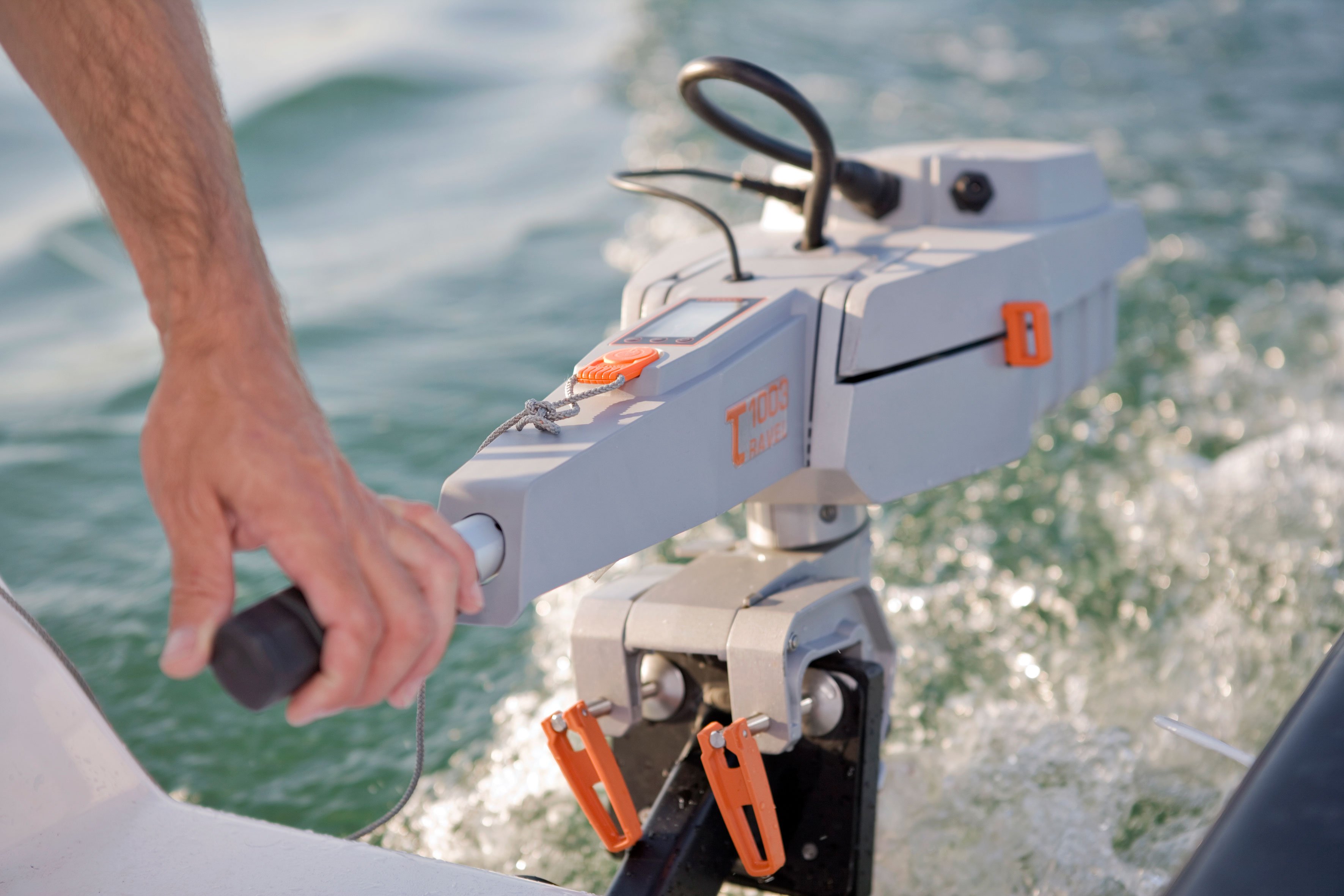
Courtesy of Torqeedo
In part one of our two-part test of five and six-horsepower engines in the upcoming January issue of Practical Sailor, we take a second look at portable electric motors. Practical Sailors interest in modern portable electric propulsion dates back to 2004, when then editor Doug Logan began to lose faith in the two-stroke outboard on his Boston Whaler. While awaiting the prognosis on his unresponsive 15-horsepower Evinrude, he bought a Minn Kota Riptide 55 trolling motor, wondering if it might make a good dinghy engine.
Logans initial review of the Minn Kota focused on its potential as a dinghy motor but he also tested it on larger skiffs. We later heard from severalPractical Sailor readers who use trolling motors to power their sailboats (some as large as 30-feet!), but most said they used them mainly for short distances and in mostly flat water. Prices on saltwater-rated trolling motors start at around $350 (a 12-volt deep cycle battery to power them adds at least another $120), making the initial costs much less than for other electric motors.
Although people often compare such trolling motors to the $2,000 Torqeedo Travel 1003, there are several key differences. The Torqeedo uses a dedicated lithium magnesium battery that has a longer life and a more favorable power-to-weight ratio than a lead-acid battery. The Torqeedos brushless motor design is more reliable and better suited for continuous duty.
In 2005, we tested four popular trolling motors with rated thrusts ranging from 40 to 80 pounds. The results highlighted a major drawback of all electric motors: available horsepower and range is closely tied to battery capacity. Driving a sailboat with one of the more powerful trolling motors at full throttle for more than a half an hourwill nearly drain a standard Group 24 battery. And you can’t expect a trolling motor to dislodge your Catalina 22 when a stiff wind has pinned it to the dock (a task that would challenge the Torqeedo Travel 1003 as well). Even with these drawbacks, a trolling motor is a viable option for sailors who just need a little help getting up a canal or off a dock in calm water.
If you need more power, there are other options. In our most recent foray into electric outboards, we tested a motor called the SolidNav Traveler. The hefty 48-volt, four-horsepower outboard was manufactured by Parsun Power Machine, Chinas largest outboard exporter. The outboard’s brushless solid magnet motor was built by Mars Electrical Co. of Milwaukee, Wis. (now Motenergy). The engine looks nearly identical to a gasoline outboard of the same horsepower and weighs slightly more. Although the Solid Nav is no longer available, Elco is marketing a very similar model for about $3,000 suggested retail price. The price does not include the requisite four 12-volt batteries (or equivalent), which can add at least another $1,500-making the initial outlay much higher than any other electric motor option.
Our testers were impressed by the motor’s heavy duty design, and the way the electric motor was incorporated into the familiar gasoline outboard form factor. Performance was good, but again, it was limited by the constraints of electric power. In our test of the Solid Nav, four North Star Energy group 24 AGM batteries with 140 amp hour reserve capacity were wired in series to deliver the required 48-volts. This battery tank delivered about eight miles of range on our test boat (a 19-foot Cape Dory Typhoon) at four knots.
Of all the electric outboards available to the sailor, the Torqeedo holds the most promise, but the niche is rather narrow. This is the third time weve looked at these motors. In our first preview, we tested an early iteration of the Travel 801L, an ultralight electric equivalent of a two horsepower outboard. Four years ago, we tested the more powerful Torqeedo Travel 1003. We pitted it against the Electric Paddle, an ultralight portable electric motor that looks like a trolling motor but has a larger diameter prop and its own rechargeable battery.
With 30 percent more battery power than the 801, plus an increase in thrust and efficiency, the Travel 1003L (long shaft) has proved impressive on the variety of boats weve used it on including: a round-bilge carbon fiber dinghy from Wing Systems, the Cape Dory Typhoon, a 9-foot, 10-inch Dynamic RIB from Mercury, a Venture 22, and the Catalina 22.
As with all electric motors, power and range are limited. On our test boat, a Catalina 22, the range on a single battery at 4 knots speed is about 2.5 miles. At slower speeds of about 2.5 knots, the maximum range is about 7 miles. Maximum speed on the Wing Systems dinghy was about seven knots, but that could only be sustained for about half an hour. At slower speeds, range approaches 10 miles.
Bottom line: For the average daysailer with high power demands, a small gasoline outboard remains the most practical choice for portable propulsion. An electric motor can work, but for longer range service it will require significant investment in big battery banks, and perhaps a solar charging system. The limited range wont matter for the lake sailor who just needs the occasional short boost home when the wind dies. For this task, the Torqeedo is the most convenient and best suited, but for the budget-minded small boat sailor tired of the hassles of gasoline power, a trolling motor will also work within certain limits.




































If be interested to learn more about how to mount one of these motors on a sailboat without an open transom, such as my Lightning.